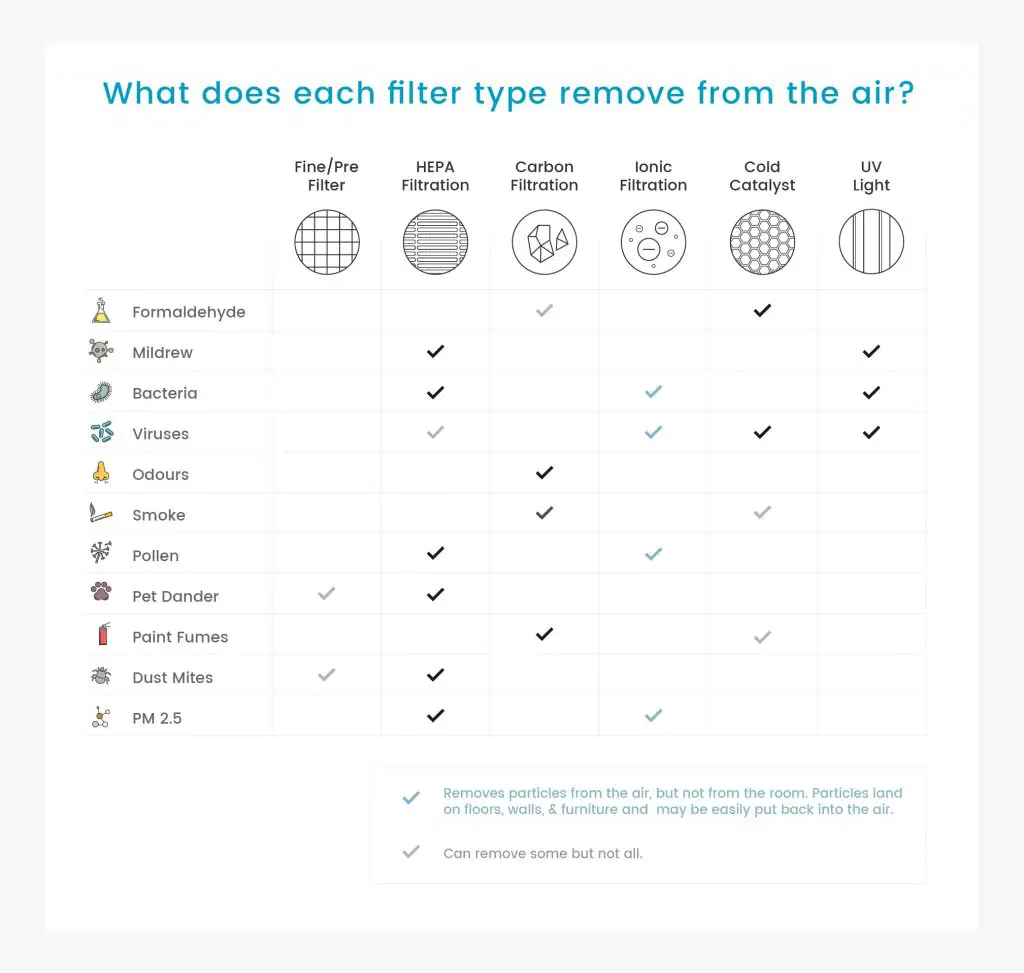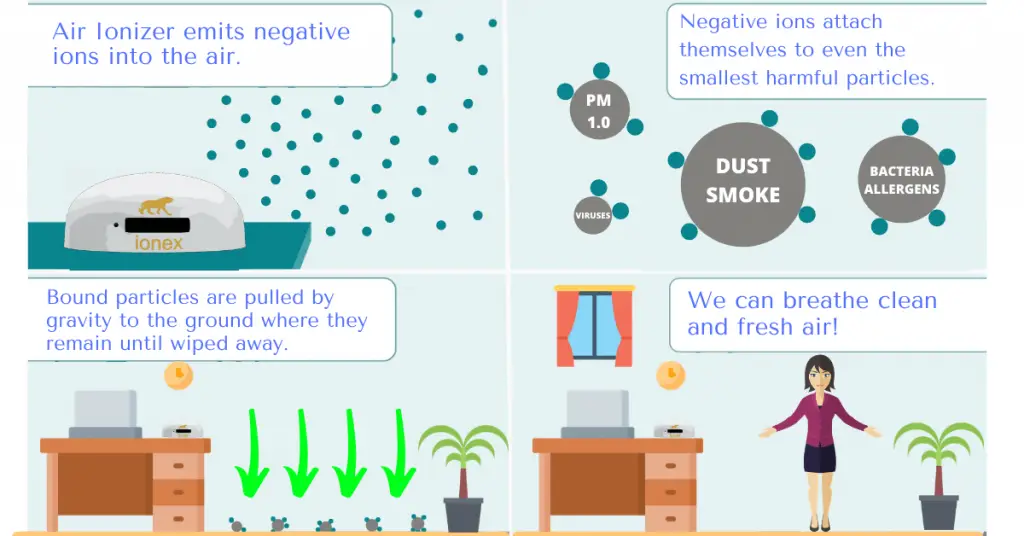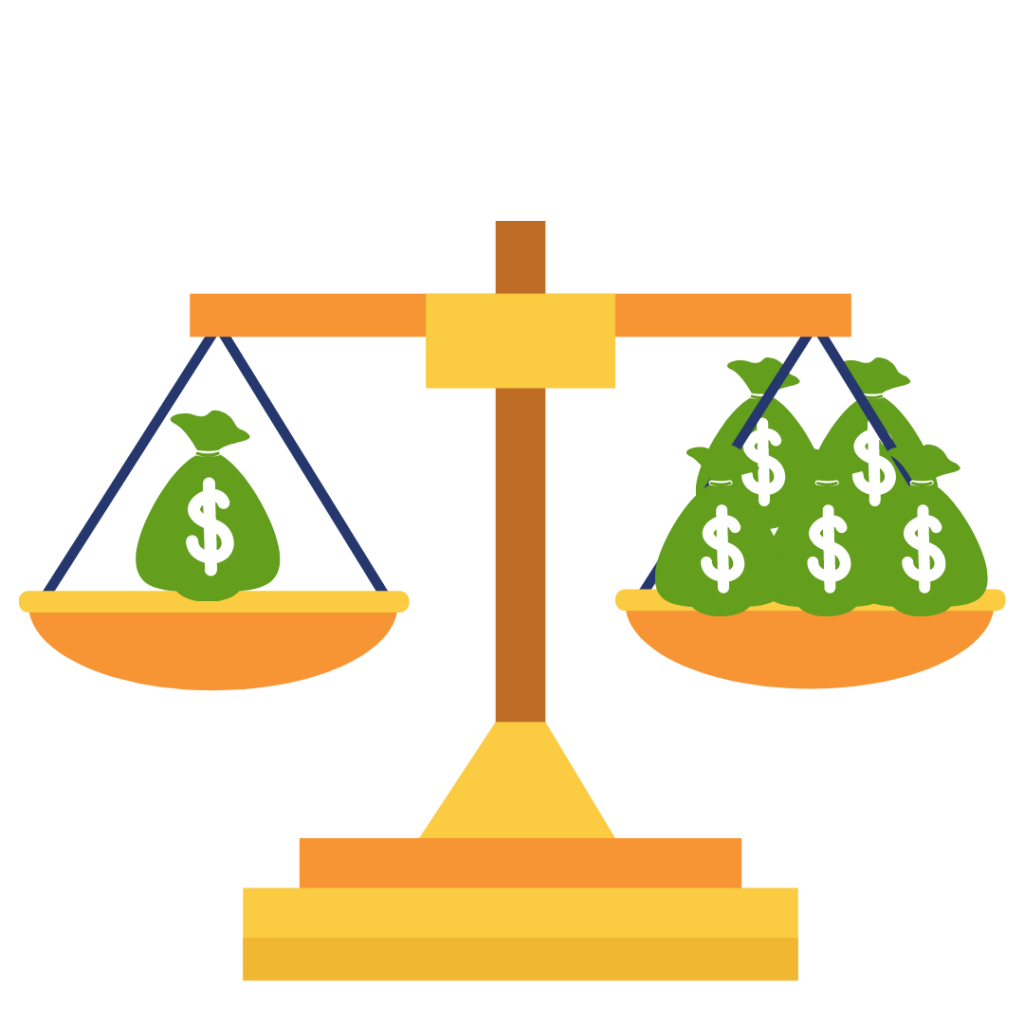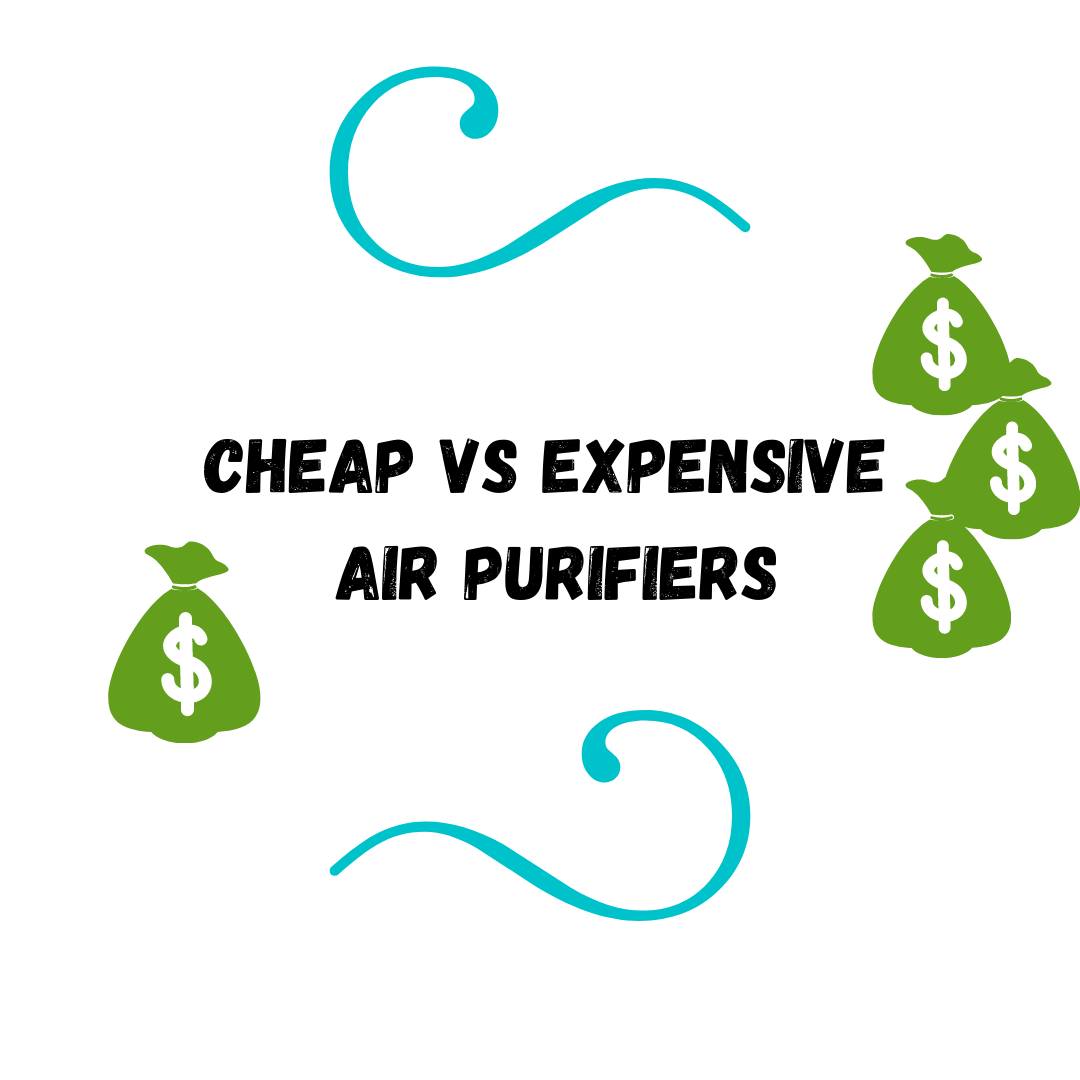There is a huge variety of air purifiers on the market today. They come in many different shapes, sizes and of course prices. Air purifiers are our number one protection against indoor air pollution, which is higher than you would expect. As air quality gets worse and worse each year, more and more people turn to air purifiers as a solution. With that comes a big dilemma – Cheap Vs Expensive Air Purifiers? Are expensive air purifiers really that much better than cheap ones, or is it all for marketing and show?
In short, the general difference between cheap and expensive air purifiers is how many different types of pollutants can they remove from the air, how effective they are at air cleaning, how much room can they cover, and how many additional features they come with. So a higher price tag comes normally comes with superior air cleaning abilities, more room coverage, and smart features. Obviously, you will always have exceptions where a higher price tag comes due to flashy marketing or hype, but on average you can expect better performance with an increased price.
There is one important thing that I need to include here – while what I wrote above holds true in general, not all air purifiers are the same. There are different types of air purifiers and the difference between cheap vs expensive units varies from type to type. In the next section, I am going to dive into these different types of air purifiers and explain what is the difference between the cheap and expensive models for each type.
Different types of air purifiers
Air purifiers have been on the market for quite a few decades now. Naturally, they evolved through time, and along the way, different methods of air cleaning were developed. Currently, we have these 6 common types of air purifiers on the market:
- Air purifiers that use the technology of HEPA filters;
- Negative ion generators (also called air ionizers or ionic air purifiers);
- UV (ultraviolet) air purifiers;
- Electric air purifiers;
- Air purifiers with activated carbon technology;
- Ozone generators (also called ozonators).
*For the purpose of simplicity, whole-house air cleaning solutions that use heating/cooling systems and air vents have been excluded.
I am going to break down each one of them separately and discuss what is the difference between cheap and expensive models for each individual air purifier type. In order to do that, we need to first breakdown which pollutants different types of air purifiers specialize in removing.

Source: Probreeze.com
As you can see, different types of air purifying methods specialize in the removal of different air pollutants. This is important to know because it will help explain part of the price difference between cheap and expensive models.
In the next few sections, I am going to explain the difference between cheap vs expensive air purifiers for each of these air purifier types.
Air purifiers that use HEPA filters
HEPA filters are the most common method of air cleaning you will find on the market. These devices use relatively simple and straightforward technology, iswhich is easy to use and gives good results. HEPA filters effectively remove the majority of air pollutants, with the exception of VOCs (volatile organic compounds), formaldehyde, smoke, and odours. We can describe the cleaning process in three easy steps:
- Like a vacuum, the air purifier device sucks in the air around it
- Once inside, the purification system captures pollutants/harmful particles that are in the air
- Clean air is released from the machine.
That being said, HEPA filters are not effective against all types of pollutants. This is why we pretty much always see additional filter types included in these devices. The typical air purifier with HEPA filter consists of a pre-filter, HEPA filter, and a carbon activated filter for smoke and odors. Sometimes they also have a UV-C light, negative ion generator, or cold catalyst filter. HEPA air purifiers use fans to push the clean air out of the device, which is why fans are important components here. There is actually a way to measure how fast and efficient an air purifier cleans the room – it is called CADR (clean air delivery rate) and we measure it either in m3/h or cm3/min. You can think of CADR like horsepower in cars.
So in what way is this information relevant? It helps us answer the pricing range. The difference between cheap vs expensive air purifiers that use HEPA filter is the CADR rating, inclusion of additional cleaning methods such as negative ion generators, quality of components, and smart features.
I have excluded replacement filter costs in this analysis. But more expensive units come with more expensive replacement filters, on average.
Explanation:
A more expensive air purifier with HEPA filter will, on average, have better components, such as a stronger fan or a top-tier HEPA filter. It will also have a higher CADR rating, making it efficient for large rooms and spaces. More expensive units also often come with a better filtration system that includes additional cleaning components like a negative ion generator, or cold catalyst filter. This gives an even better cleaning performance, as more pollutants are captured which ultimately translates to cleaner air. Many times smart features are also included – automatic mode, air quality sensor, etc. These ramp up the price a bit aswell.
On the other hand, most cheap air purifiers (at the around $50-$100 price point) come with a basic 3-stage filtration system, fewer settings on the control panel, fewer additional cleaning components, lower CADR rating, and usually very little/no smart features. Some even have a washable pre-filter.
It is, of course, possible to find cheaper purifiers that come with some smart features, higher CADR rating or a better filtration system – but these are more of an exception. In contrast, you can also find some expensive air purifiers with more basic options, where you are paying a higher price mostly for the “modern” design or the brand name.
Negative ion generators
Negative ion generators, sometimes called air ionizer or ionic air purifiers, work completely differently than air purifiers which use HEPA filters (or just filters in general). Instead of intaking the surrounding air, a negative ion generator releases a huge amount of negative ions in the air. These negative ions attach themselves to all pollutants and harmful particles, pulling them on the ground with the help of gravity. Once on the ground, these particles are unable to reach our lungs via inhallation. To illustrate this process, I have included a great picture below.

Air ionizers can come as standalone units, or as an addon with other types of air purifiers. So you can have a HEPA filter air purifier or even an ozonator that comes with an added air ionizer function. The effectiveness of a negative ion generator is tied solely to the amount of negative ions they release. Since there are many harmful pollutants in the air, a small number of negative ions will do almost nothing. But air ionizers are probably the most powerful air cleaning device IF they have an enormous negative ion emission (tens of millions cm3/sec).
The biggest issue that many people have with negative ion generators is that almost all of them produce ozone as a byproduct. Ozone is harmful to our health (even in small quantities). People with allergies, respiratory issues, and kids are especially sensitive to ozone. There is a limit on how much ozone a device can produce without severely affecting our health, with the most optimal option being zero ozone. I mentioned ozone because it is a factor when it comes to the price.
The main difference between cheap and expensive negative ion generators is the emission of negative ions and the amount of ozone production. Cheaper air ionizers produce a lower amount of negative ions per cm3/second, while expensive air ionizers produce more. In my experience working in the air ionizer world, around 6-7 million negative ions per cm3/sec is the minimum I would look for. Cheaper negative ion generators also use cheaper components, which oxidize over time, releasing more ozone. Most expensive negative ion generators use golden needles or a carbon brush (these do no oxidize over time) which do not produce any ozone.
UV air purifier
As the name suggests, UV-C air purifiers use UV (ultraviolet) light to destroy airborne pathogens and microorganisms such as mold, bacteria, and viruses. Although they remove much fewer pollutants than other types of air purifiers, they still do their job well. Just like negative ion generators, UV air purifiers can be stand-alone units or part of a bigger cleaning system. Usually, they are more effective as part of a bigger system, as they can not trap pollutants on their own. The main purpose of UV air purifiers is disinfection, regardless of choosing a cheap or expensive model.
UV-C air purifiers have possible ozone issues, just like air ionizers. The production of ozone depends on the wavelength used. Simply put:
- If the UV light wavelength is shorter than 240 nm, it will CREATE ozone.
- If the UV light wavelength is 240-280 nm, it will DESTROY ozone.
The difference between cheap and expensive air purifiers that use UV-C light is pretty much the material of the emitter and light intensity (via wattage). In this case, in order to avoid ozone, it is almost never recommended to get a cheap UV-C light purifier. You need one that has enough power (wattage) and a good emitter material, to ensure that you get in that sweet spot of 240-280 nm wavelength that does not produce ozone.
Key Difference between Cheap and Expensive air purifiers
Cheap air filters:
- Have a lower MERV rating and can capture larger particles like dust and pollen.
- Are made of basic materials like fiberglass and may not be as durable.
- Are typically less expensive and more budget-friendly.
- May need to be replaced more frequently, which can add up over time.
- May not be as effective in capturing harmful particles like bacteria and viruses.
Expensive air filters:
- Have a higher MERV rating and can capture smaller particles like bacteria and viruses.
- Are made of advanced materials like HEPA filters or activated carbon and are more durable.
- Are typically more expensive but can provide better air quality for those with allergies or respiratory issues.
- Can last longer than cheap air filters, so they may be more cost-effective in the long run.
- Can remove odors and chemicals from the air in addition to capturing particles, making them ideal for those with chemical sensitivities.
Cheap vs expensive air purifiers – which one is right for me?
By this point, you have learned “why” and “what” are the differences between cheap and expensive purifiers. In general, it all comes down to component quality, room coverage, number of features, air cleaning effectiveness, and in some cases fewer side effects.
Not all type of air purifiers have all of the above-mentioned factors included, many have only one or two. Air purifiers with HEPA filter have, by far, the biggest number of variables that make them either cheap or expensive.

So how can you benefit from this information? when is it worth to go for a cheap vs expensive air purifier? Here are some guidelines.
Air purifier type
As I wrote in the beginning, there are different types of air purifiers. Pick the one that you think will suit your needs most. Most beginners should start with a simple HEPA air purifier or a pure negative ion generator. Others have more specific uses and generally start at a higher price point. HEPA air purifiers have the biggest price range on this list, ranging from $30 to over $600. You are pretty much sure to find a combination that suits all of your needs.
Also, are you looking at long or short term? For the long term, you are better off investing a little bit more money in order to get a good purifier that will last you a few years.
Here are my top picks for HEPA filters – from cheap ones, to something a bit more expensive:
Room size
What is the size of the room in which you plan to use your air purifier? For large and sometimes even medium-sized rooms, it is pretty much always better to take a more expensive air purifier. After all, you want to have clean air in your whole room – and not just in some parts of the room. For beginners, or anyone looking to purify a small room or space, cheaper air purifiers are often more than enough.
For small rooms, I recommend any of the models I list in this post: Top 5 best HEPA air purifiers under $50
For large rooms, I recommend any models listed here: Best air purifiers for big rooms in 2020
Pollutant
Which air pollutant is your biggest concern? Are you looking for something to remove odors, mold, or are you looking for clean air just in general? If you have no specific problems, but would just like clean air – then HEPA filters are the best overall. Refer to the air pollutant table at the start of this article if you have specific pollutants, and go from there.
Respiratory problems
If you have respiratory problems then you will want to go with a more expensive air purifier. They will generally be more effective in removing pollutants. This includes allergens, which is especially important for anyone that suffers from allergies. If you are thinking of getting an air ionizers or UV-C air purifier instead, then go for more expensive ones – the ones that have no ozone. If you have only mild allergies or asthma, then you can come through with a cheap air purifier, but no ozone is still a must!
Here is my recommendation for the 5 best air ionizers you can get in 2020.
Number of features
How many features do you want your air purifier to come with? If you want mostly performance and do not care about all the extra settings and buttons…then a cheap air purifier will do the job. More expensive air purifiers usually come with sensors, automatic mode, and many settings. This is not always the case tho, so be careful. You CAN find very cheap air purifiers that come with some of these features. But keep in mind that they usually come at a cost with lower quality filtering components.
So if you want smart features and a lot adjustable settings -> go for more expensive models.
These are just some of the main things to consider when deciding if between a cheap vs expensive purifier. I hope this post helped clear some questions regarding cheap vs expensive air purifiers and offered you enough insight to decide which one is best for you. Got any additional questions? Feel free to comment below.
